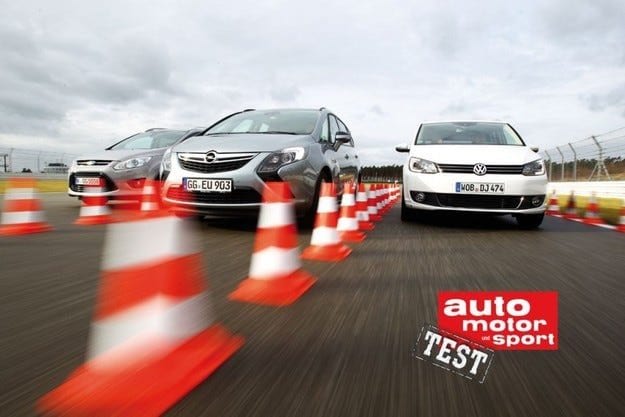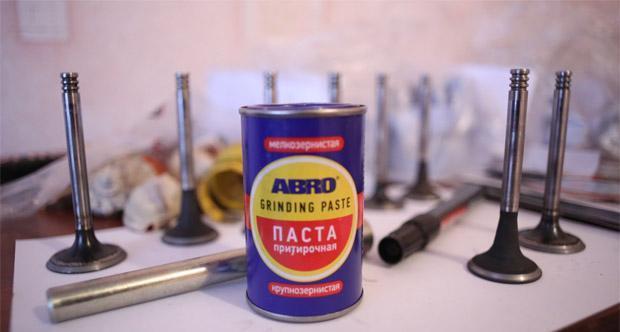
Valve grinding pastes. Which one to choose?
Content
Why grind valves?
Lapping is a kind of polishing, when abrasive particles, falling between parts of different hardness, are embedded in a softer material. As a result, the surface cleanliness of a harder product in a friction pair increases. Lapping compounds are widely used in the practice of auto repair to obtain the correct mating of the angular dimensions of the valve and seat. For properly lapped valves, the contact surface area approximately doubles.
High-quality lapping of valves thus solves two problems:
- Creates a better seal between the valve and the head, which will prevent gases from escaping during the compression stroke.
- Prevents burning of valves, since the increased contact area provides better heat transfer from the valves to the head.
Lapping is carried out by applying a special composition - lapping paste for valves - to the edges of the valves, followed by their rotation over the head.


The composition of the grinding paste
The main components of valve lapping pastes are:
- An oil that increases heat capacity and reduces the temperature on lapped surfaces. Some pastes, in order to reduce viscosity, are produced on a water basis.
- Finely dispersed abrasive for polishing.
- Antioxidants that reduce mechanochemical wear.
- Corrosion inhibitors that have a positive effect on the durability of the valve.
- Illuminating compounds.
The effectiveness of any lapping paste for valves is determined by the type of abrasive. Carborundum, diamond grit, silicon dioxide, glass, aluminum oxide, as well as silicon and boron carbides are used.
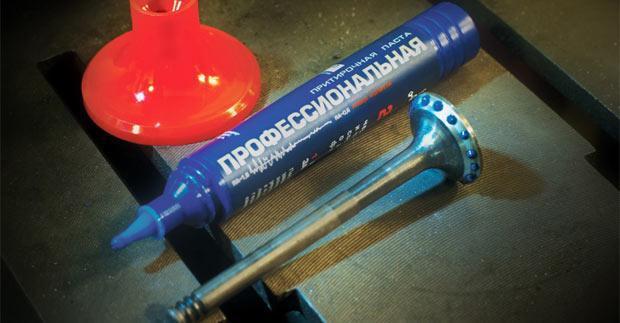

Lapping paste for valves is classified from coarse to fine. In coarse paste, the abrasive particles are large enough, so it is used for rough lapping. The higher the grit size of the lapping paste, the finer the lapping can be done with it.
Oil and grinding paste have opposite functions: while the abrasive increases friction, the oil tends to reduce it, while limiting the cutting action. Oil (or water) is also the base in which abrasive particles move during lapping.
Some users arbitrarily reduce the initial viscosity of the paste, which is unacceptable: as a result, the loading force and the cutting effect of abrasive particles on the lapped surfaces are reduced. The particles themselves are washed out faster, which leads to an increase in the consumption of the lapping compound.
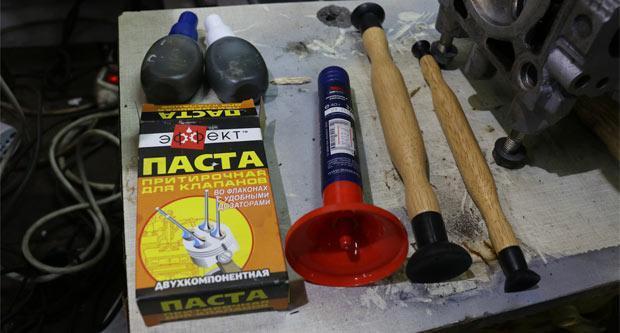

Lapping Features
Regardless of the brand of valve lapping paste, you should adhere to the following recommendations:
- Before starting work, it is necessary to press the lapped part as evenly as possible to the layer of lapping paste.
- The element to be lapped should be constantly pressed during the lapping process until excess composition appears in the gap between the parts.
- The rotation of the lap should be carried out until the force of moving the mating parts decreases: this indicates that the abrasive particles are squeezed out of the processing zone, and there is only an oil or water binder.
- If lapping needs to be continued, the old paste is removed and fresh paste is applied.
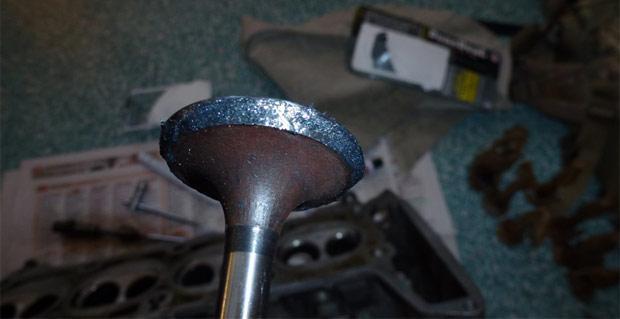

Quality control of valve lapping at home can be performed by two methods - “on a pencil” and “on kerosene”. In the first case, up to six marks are applied to the surface using a soft pencil, which should be located in the radial direction. The ground parts are applied, and 2 ... 3 turns are performed. If the risks remain, lapping must be continued. To check "for kerosene", the mating parts are wiped dry and placed on a sheet of clean white paper, after which a little kerosene is poured into the gap. If after 6-7 hours there are no traces of kerosene on the opposite side, grinding can be considered complete.


Watch this video on YouTube
Valve lapping paste. Which is better?
The following rating of pastes is compiled mainly on the basis of feedback from motorists themselves:
- "Classic" (manufacturer VMPavto, Russia). Suitable for all types of engines, it features a two-component composition, which allows you to consistently perform coarse and fine grinding. The grain size is from 0,53 to 0,9 microns, and they come into operation gradually, as the roughness of the treated surfaces changes. Issue price - from 600 rubles. for 400 g of product. It should be noted that VMPAuto produces highly specialized pastes under the same brand - diamond and professional, which are suitable, respectively, only for diesel and gasoline engines. The price of such pastes is higher: for example, for diamond - from 220 rubles. per package 100 g.
- ABRO Grinding Paste GP-201 from the ABRO trademark (USA). It also contains coarse and fine-grained components, which are located in separate parts of the container. Economical in consumption, well kept on the rubbed surface. The price of a package weighing 100 g is from 150 rubles.
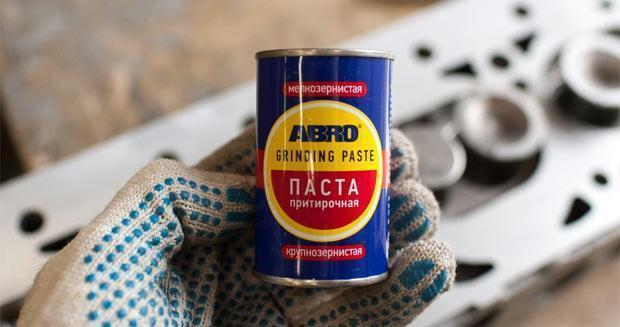

- Effect (produced in St. Petersburg). The package includes two bottles of coarse and fine paste, as well as a dispenser to facilitate the lapping process. Price - from 160 rubles. for 90 g of product.
- Permatex (manufacturer - USA). It belongs to the group of compound water-soluble pastes, with which you can not only grind valves, but also clean the chrome surfaces of the car. Price - from 550 rubles. for packing.
It should be noted that the division of grinding pastes into professional and amateur ones is rather arbitrary, and is expressed only in the volume of a single product package.


Watch this video on YouTube
